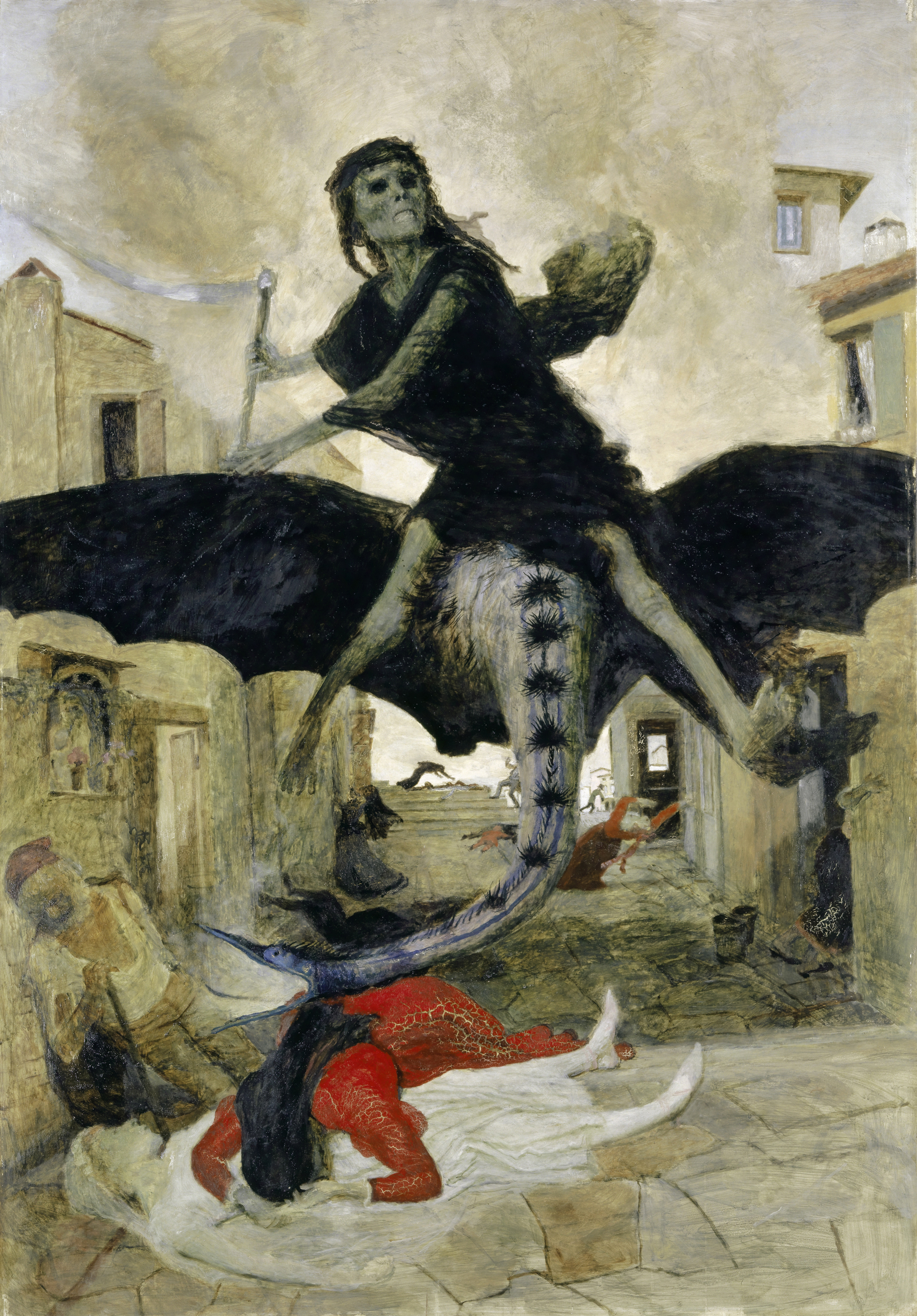Plague (Böcklin) on:
[Wikipedia]
[Google]
[Amazon]
 ''Plague'' is an 1898 painting in
''Plague'' is an 1898 painting in
 ''Plague'' is an 1898 painting in
''Plague'' is an 1898 painting in tempera
Tempera (), also known as egg tempera, is a permanent, fast-drying painting medium consisting of colored pigments mixed with a water-soluble binder medium, usually glutinous material such as egg yolk. Tempera also refers to the paintings done ...
by the Swiss symbolist artist Arnold Böcklin, held in the Kunstmuseum Basel
The Kunstmuseum Basel houses the oldest public art collection in the world and is generally considered to be the most important museum of art in Switzerland. It is listed as a heritage site of national significance.
Its lineage extends back to ...
. It exemplifies the artist's obsession with nightmares of war, pestilence and death. The painting shows Death
Death is the irreversible cessation of all biological functions that sustain an organism. For organisms with a brain, death can also be defined as the irreversible cessation of functioning of the whole brain, including brainstem, and brain ...
riding on a bat-like winged creature, who travels through the street of a medieval European town.
''Plague'' is rendered mostly using shades of pale green, a colour often associated with decomposition
Decomposition or rot is the process by which dead organic substances are broken down into simpler organic or inorganic matter such as carbon dioxide, water, simple sugars and mineral salts. The process is a part of the nutrient cycle and is e ...
. The other predominant tones are black and dull browns; for example, in the clothes worn by the figures shown in the mid and background as they dive for safety before Death's path. The red cloth of the woman shown in the mid-foreground is the only vivid colour seen; she lies across the corpse of a woman who was cut down also.
Sources
* Eco, Umberto. '' On Ugliness''. Rizzoli, 2007. {{Arnold Böcklin 1898 paintings Symbolist paintings Paintings in the collection of the Kunstmuseum Basel Paintings by Arnold Böcklin Epidemics in art Paintings about death